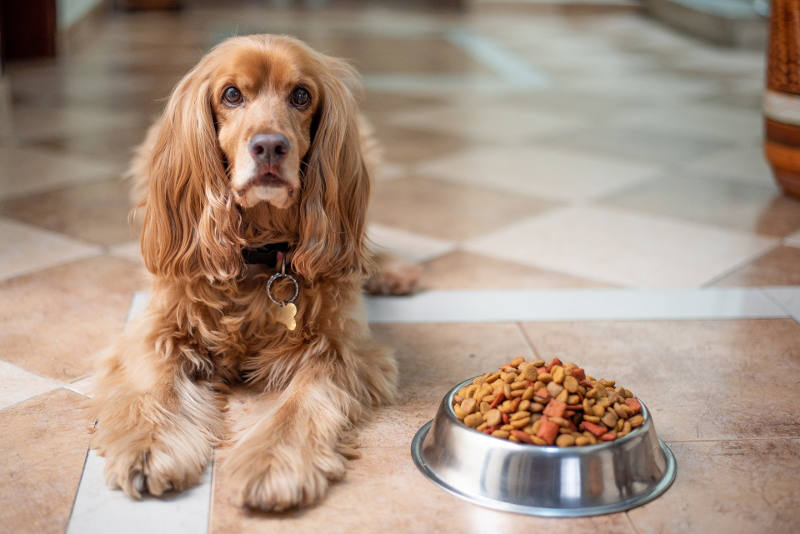From toilet paper shortages to skyrocketing lumber pricing, the pandemic has brought a number of impediments to the global economy. Now, interruptions in the supply chain and a rapidly growing pet population have caused increasing strain to the pet food industry, and it may be some time until things return to normal.
There are a few different factors that come into play here: the increase in pet ownership during the pandemic, shortages in high quality meats, and the increasing price in metals needed to produce cans are especially influential in the pet industry’s supply shortages.
In 2020, the surge in pet ownership is estimated to be between 4% and 8% growth, and has resulted in a greatly increased demand for pet food, treats, accessories, and more.
By and large, the canned pet food market is being hit the hardest. In North America, there are four major canneries, as well as a few smaller privately-owned canneries that currently manufacture wet pet foods. Thailand is the next most predominant manufacturer of canned pet foods in the world. It is estimated that 20-30% of pet owners feed their cats and dogs canned food.
Due to the extensive demand for PPE and pandemic-related supplies, there is a significant shortage in shipping containers to bring canned goods from overseas. Because of this, it can take months for pet food manufacturers to secure cargo space between Thailand and North America. To complicate things even further, pandemic-related temporary trade restrictions and sidelined port workers and truck drivers further hamper the process of bringing goods to North America from overseas.
Less time being allocated to pet food manufacturing has also compounded the strain on supply. Since the beginning of the pandemic, many canneries and manufacturers of pet commodities switched gears to produce high-demand products like hand sanitizer and essential PPE on top of their regular pet goods production.
Manufacturers of cans and other packaging for pet foods are also increasing production of packaging for hand sanitizers and other high demand pandemic-related goods. This has created shortages in packaging materials; many pet food brands have the ingredients needed to make their foods, but cannot source enough packaging to put it in.
The production of pet foods and other pet goods has decreased at a time when demand is at an all-time high. Labour supplies, worker safety protocols at manufacturing facilities, and factory shut-downs due to COVID-19 are also significant factors.
Several global events have recently contributed to decreased supply of meats as well. For example, unexpectedly low temperatures across Texas and southern parts of the U.S. in February left hundreds of thousands of chickens dead, sparking shortages in both human and pet food channels. In the United States, boneless chicken breast prices have soared 236% since last fall.
Pandemic notwithstanding, meat prices in both human and pet markets are expected to rise even more in the aftermath of the recent cyber-attack on one of the world’s largest meat producers.
Globally, shortages in rabbit and other exotic meats are affecting a vast number of markets.
At first it was toilet paper, and now it seems pet foods may be the trendiest commodities to stock-up on. In the United States, pet food sales have increased by 9.7% since 2020, representing $42 billion of a market valued at over $100 billion annually. When you combine the rapid growth of the pet-owning public with shortages in the supply chain, the result is an increasing deficit of pet products sparking concern among consumers.
To discourage panic buying, an increasing number of grocery stores across North America have implemented purchasing limits on high demand pet foods. Despite these efforts, the supply of pet food is still falling well short of demand.
So when can we expect things to return to normal? Industry experts like Steve King, president and CEO of the American Pet Products Association (APPA), expect the supply of pet foods to be an ongoing issue into the first quarter of 2022. Until then, pet food manufacturers must adapt and innovate to meet the needs of their growing client base.
Brandon Forder, known as The Pet Expert, is vice-president of Canadian Pet Connection, an industry leader in healthy pet lifestyles. Brandon is certified in pet nutrition, and has more than twenty-five years’ experience specializing in pet health and behaviour. He has written hundreds of informative pet-related articles for newspapers, magazines, radio, and the popular Ask the Pet Expert Blog. Brandon is highly skilled in pet problem solving, and enjoys teaching others about smart and responsible pet ownership. To learn more, visit www.CanadianPetConnection.ca.












